Difference between revisions of "Chrome tanned"
| Line 5: | Line 5: | ||
==History of chrome tanning== | ==History of chrome tanning== | ||
| − | Until the 19th century, there was little progress in the [[tanning|tanning process]]. While there was some use of [[Tawing with alum|alum (aluminium) salts]] and [[tanning#Tanning methods|other tanning methods]], most tanning was done by the [[vegetable tanning]] process. In 1858, chrome tanning was invented by the German technologist F. Knapp & Cavalin, a Swede. However, it was an American chemist by the name of Augustus Schultz who first patented the chrome tanning process. | + | Until the 19th century, there was little progress in the [[tanning|tanning process]]. While there was some use of [[Tawing with alum|alum (aluminium) salts]] and [[tanning#Tanning methods|other tanning methods]], most tanning was done by the [[vegetable-tanned leather|vegetable tanning]] process. In 1858, chrome tanning was invented by the German technologist F. Knapp & Cavalin, a Swede. However, it was an American chemist by the name of Augustus Schultz who first patented the chrome tanning process. |
In the following decades, chrome tanning became the most common and dominant kind of [[tanning]]. Chrome tanning process meant leathers could be tanned in a matter of days in comparison to vegetable tanning. The reduced time was a main decisive factor to Chrome tanning becoming one of the main tanning process. The discovery of chrome tanning, connected to the process of [[Oils & fats in the leather industry#fatliquoring (regreasing)|fatliquoring (regreasing)]] and the development of [[leather colour|synthetic dyes]] has, enables the variety of currently known appearance of leather. The chromium salts belongs to the group of [[Mineral tanning|mineral tannins]]. | In the following decades, chrome tanning became the most common and dominant kind of [[tanning]]. Chrome tanning process meant leathers could be tanned in a matter of days in comparison to vegetable tanning. The reduced time was a main decisive factor to Chrome tanning becoming one of the main tanning process. The discovery of chrome tanning, connected to the process of [[Oils & fats in the leather industry#fatliquoring (regreasing)|fatliquoring (regreasing)]] and the development of [[leather colour|synthetic dyes]] has, enables the variety of currently known appearance of leather. The chromium salts belongs to the group of [[Mineral tanning|mineral tannins]]. | ||
| Line 21: | Line 21: | ||
==The global importance of chrome tanning== | ==The global importance of chrome tanning== | ||
| − | Chrome tanning with chromium (III) salts accounts for around 85 percent of global [[leather production]] (as per 2014). 95% of [[leather shoes|shoe upper leather]], 70% of [[leather furniture|leather upholstery]] (but decreasing in favour of [[Chrome tanned#Chrome-free leather - FOC = Free of Chrome|FOC-leather) and almost 100% of [[Leather clothing|clothing leather]] are chrome tanned. | + | Chrome tanning with chromium (III) salts accounts for around 85 percent of global [[leather production]] (as per 2014). 95% of [[leather shoes|shoe upper leather]], 70% of [[leather furniture|leather upholstery]] (but decreasing in favour of [[Chrome tanned#Chrome-free leather - FOC = Free of Chrome|FOC-leather)]] and almost 100% of [[Leather clothing|clothing leather]] are chrome tanned. |
Unlike [[Vegetable-tanned leather|vegetable tanned leather]], it has twice the tensile strength, while it has a lighter weight because the chromium salts used for tanning do not fill the skin. The tannin makes up only 4% (with newer leathers even only about 1.5%) of the leather weight, while [[vegetable-tanned leather]] has a tannin content of about 20 percent. | Unlike [[Vegetable-tanned leather|vegetable tanned leather]], it has twice the tensile strength, while it has a lighter weight because the chromium salts used for tanning do not fill the skin. The tannin makes up only 4% (with newer leathers even only about 1.5%) of the leather weight, while [[vegetable-tanned leather]] has a tannin content of about 20 percent. | ||
| Line 38: | Line 38: | ||
</p> | </p> | ||
<p align=center> | <p align=center> | ||
| − | '' | + | ''Chrome tanning in the [[tanning leather#Tanning drum|tanning drum]].''<br></p> |
<p> </p> | <p> </p> | ||
| Line 44: | Line 44: | ||
{| class="prettytable right" | {| class="prettytable right" | ||
| − | |+''' | + | |+'''Proportion of chrome-tanned leather in various sectors of use''' |
| − | !bgcolor="#cccccc" | | + | !bgcolor="#cccccc" | Area || bgcolor="#cccccc" | Chrome-tanned leather in % || bgcolor="#cccccc" | tendency |
|- | |- | ||
| − | | [[ | + | | [[Leather shoes#Oberleder|Shoe upper leather]] |
|style="text-align: center"| 95 | |style="text-align: center"| 95 | ||
| − | |style="text-align: center"| | + | |style="text-align: center"| No change |
|- | |- | ||
| − | | [[ | + | | [[Leather furniture|Furniture leather]] |
|style="text-align: center"| 70 | |style="text-align: center"| 70 | ||
| − | |style="text-align: center"| | + | |style="text-align: center"| Decrease in favour [[Chrome tanned#Chrome-free leather - FOC = Free of Chrome|FOC-leather)]] |
|- | |- | ||
| − | | [[ | + | | [[Car leather]] |
|style="text-align: center"| 50 | |style="text-align: center"| 50 | ||
| − | |style="text-align: center"| | + | |style="text-align: center"| Decrease in favour [[Chrome tanned#Chrome-free leather - FOC = Free of Chrome|FOC-leather)]] |
|- | |- | ||
| − | | [[ | + | | [[Leather clothing|Garment leather]] |
|style="text-align: center"| 100 | |style="text-align: center"| 100 | ||
| − | |style="text-align: center"| | + | |style="text-align: center"| No change |
|- | |- | ||
| − | | [[ | + | | [[Leather handbags|Bags, [[leather belt|belts]], [[Leather accessories|accessories]] |
|style="text-align: center"| 60 | |style="text-align: center"| 60 | ||
| − | |style="text-align: center"| | + | |style="text-align: center"| No change |
|- | |- | ||
| − | | [[ | + | | [[Leather shoes#Sole leather|Sole leather]] |
|style="text-align: center"| - | |style="text-align: center"| - | ||
| − | |style="text-align: center"| | + | |style="text-align: center"| No change |
|} | |} | ||
| − | '' | + | ''Source: Journal leather & skins market - Leder & Häute Markt 3/2008, page 46.'' |
| Line 83: | Line 83: | ||
</p> | </p> | ||
<p align=center> | <p align=center> | ||
| − | ''"[[Wet | + | ''"[[Wet blue]]" = damp, gray-bluish leather dyed right after chrome tanning by chromium.''<br></p> |
<p> </p> | <p> </p> | ||
| − | + | As a tanning agent, almost always, 33% basic chromium sulphate is used with 26% of chromium (III) oxide content. Annually 480000 tonnes are produced in chrome tanning worldwide, which is about 125000 tonnes of chromium (III) oxide. The use of chromium (III) salts is considered harmless to health and does not give rise to any difficulties in the vast majority of people, despite intensive skin contact in footwear or apparel. Drinking water is allowed to contain 50 micrograms (chromium III) per liter. | |
| − | + | Major suppliers of chromium are South Africa with 38%, India 20%, Kazakhstan 15%, Turkey with 7%, [https://www.youtube.com/watch?v=9yUO8cvwLHU Russia], [https://www.youtube.com/watch?v=1z4aAGWjMo0 Brazil] and Zimbabwe each with 3% and Finland with 2%. | |
==Chrome-free leather - FOC = Free of Chrome== | ==Chrome-free leather - FOC = Free of Chrome== | ||
| − | + | FOC (free of chrome, chrome-free) labeled leather is [[tanning|tanned]] with [[tannins]] free of chromium (III). They are now increasingly used in [[car leather|automotive upholstery]] and [[leather furniture|furniture upholstery]]. The [[car leather|leather seats of Audi and Porsche]] are always free of chrome. | |
| − | + | The production of FOC-leather is more complex than that of the chrome-tanned leather. For example in the [[tanning process]], an exact temperatures must be observed to successfully tan. FOC leather is mostly produced in developed countries. | |
| − | + | Frequently chromium-free leather is advertised with descriptions such as "without chromium and pollutants". This can give the impression that chrome tanning is harmful whereas tanning with chromium III is absolutely harmless. Many people associate"chrome" to be toxic or may have read in the press about the exceedances of [[Chrome VI - Chromium VI|chromium VI]]. Marketing ideas for FOC leather usually exaggerate these fears. | |
| + | FOM (free of metal) is the name for leather that has been tanned completely without the use of metals and their compounds (as aluminum, iron or titanium). | ||
| − | + | Currently, the harmless chromium tanning is dominant and alternative [[tanning|tanning methods]] cannot replace this kind of tanning neither cost-neutral nor technically. Many [[vegetable-tanned leather|vegetable tanning agents]] do not have sufficient volume to meet the needs of tannins for [[leather industrie|world production]] to satisfy to leather. | |
| − | + | ||
| − | + | ||
| − | + | ||
| − | + | ||
| − | + | ||
| − | + | ||
| − | + | ||
| − | + | ||
| − | + | ||
| − | + | ||
| − | + | ||
| − | + | ||
| − | + | ||
| − | + | ||
| − | |||
| − | + | ==[[Chrome VI - Chromium VI]]== | |
| + | [[Chrome VI - Chromium VI|Chromium (VI)]] is harmful and can occur under improper tanning conditions in the leather. However, this aspect is now well researched and can be avoided. | ||
| − | * [[ | + | * [[Chrome VI - Chromium VI|For more information about chromium VI]] |
| − | == | + | ==Chrome tanning - Ecology== |
| − | + | Also environmental considerations with respect to the chrome tanning are relevant. The chromium-containing waste water and waste materials, must be recycled to recover valuable materials. Modern tanneries manage to bind up to 97% of the chromium used in the leather fiber, in order to keep the waste water load low and to save costs. | |
| − | + | Correct disposal of chrome-tanned leathers is important. For example, [[car leather|leather seats]] in scrapped cars require appropriate handling because combustion of chrome-tanned leather can produces harmful [[Chrome VI - Chromium VI|chromium (VI)]]. Formation behavior of chromium (VI) under conditions of high heat (bright sunlight on black [[car leather|car upholstery]] or [[Leather dashboard|dashboard leather]]) should also be reviewed regularly. | |
Revision as of 09:50, 6 November 2016
Contents
History of chrome tanning
Until the 19th century, there was little progress in the tanning process. While there was some use of alum (aluminium) salts and other tanning methods, most tanning was done by the vegetable tanning process. In 1858, chrome tanning was invented by the German technologist F. Knapp & Cavalin, a Swede. However, it was an American chemist by the name of Augustus Schultz who first patented the chrome tanning process.
In the following decades, chrome tanning became the most common and dominant kind of tanning. Chrome tanning process meant leathers could be tanned in a matter of days in comparison to vegetable tanning. The reduced time was a main decisive factor to Chrome tanning becoming one of the main tanning process. The discovery of chrome tanning, connected to the process of fatliquoring (regreasing) and the development of synthetic dyes has, enables the variety of currently known appearance of leather. The chromium salts belongs to the group of mineral tannins.
Immediately after tanning, the leather is still wet and gets a blue tinge, hence it is also referred to as wet blue.
Chromium (III) oxide in powder form.
The global importance of chrome tanning
Chrome tanning with chromium (III) salts accounts for around 85 percent of global leather production (as per 2014). 95% of shoe upper leather, 70% of leather upholstery (but decreasing in favour of FOC-leather) and almost 100% of clothing leather are chrome tanned.
Unlike vegetable tanned leather, it has twice the tensile strength, while it has a lighter weight because the chromium salts used for tanning do not fill the skin. The tannin makes up only 4% (with newer leathers even only about 1.5%) of the leather weight, while vegetable-tanned leather has a tannin content of about 20 percent.
Chrome-tanned leather is easier to hydrophobilize as with other tanning alternatives and the leather can easier be softened. The tanning process is faster and less tanning chemistry is needed compared to vegetable-tanned leather.
Cost saving: Freshly tanned wet blue with its characteristic bluish tint is globally transportable and can be stored well. This facilitates unlimited international sales and global processing.
Chrome tanning in the tanning drum.
| Area | Chrome-tanned leather in % | tendency |
|---|---|---|
| Shoe upper leather | 95 | No change |
| Furniture leather | 70 | Decrease in favour FOC-leather) |
| Car leather | 50 | Decrease in favour FOC-leather) |
| Garment leather | 100 | No change |
| [[Leather handbags|Bags, belts, accessories | 60 | No change |
| Sole leather | - | No change |
Source: Journal leather & skins market - Leder & Häute Markt 3/2008, page 46.
"Wet blue" = damp, gray-bluish leather dyed right after chrome tanning by chromium.
As a tanning agent, almost always, 33% basic chromium sulphate is used with 26% of chromium (III) oxide content. Annually 480000 tonnes are produced in chrome tanning worldwide, which is about 125000 tonnes of chromium (III) oxide. The use of chromium (III) salts is considered harmless to health and does not give rise to any difficulties in the vast majority of people, despite intensive skin contact in footwear or apparel. Drinking water is allowed to contain 50 micrograms (chromium III) per liter.
Major suppliers of chromium are South Africa with 38%, India 20%, Kazakhstan 15%, Turkey with 7%, Russia, Brazil and Zimbabwe each with 3% and Finland with 2%.
Chrome-free leather - FOC = Free of Chrome
FOC (free of chrome, chrome-free) labeled leather is tanned with tannins free of chromium (III). They are now increasingly used in automotive upholstery and furniture upholstery. The leather seats of Audi and Porsche are always free of chrome.
The production of FOC-leather is more complex than that of the chrome-tanned leather. For example in the tanning process, an exact temperatures must be observed to successfully tan. FOC leather is mostly produced in developed countries.
Frequently chromium-free leather is advertised with descriptions such as "without chromium and pollutants". This can give the impression that chrome tanning is harmful whereas tanning with chromium III is absolutely harmless. Many people associate"chrome" to be toxic or may have read in the press about the exceedances of chromium VI. Marketing ideas for FOC leather usually exaggerate these fears.
FOM (free of metal) is the name for leather that has been tanned completely without the use of metals and their compounds (as aluminum, iron or titanium).
Currently, the harmless chromium tanning is dominant and alternative tanning methods cannot replace this kind of tanning neither cost-neutral nor technically. Many vegetable tanning agents do not have sufficient volume to meet the needs of tannins for world production to satisfy to leather.
Chrome VI - Chromium VI
Chromium (VI) is harmful and can occur under improper tanning conditions in the leather. However, this aspect is now well researched and can be avoided.
Chrome tanning - Ecology
Also environmental considerations with respect to the chrome tanning are relevant. The chromium-containing waste water and waste materials, must be recycled to recover valuable materials. Modern tanneries manage to bind up to 97% of the chromium used in the leather fiber, in order to keep the waste water load low and to save costs.
Correct disposal of chrome-tanned leathers is important. For example, leather seats in scrapped cars require appropriate handling because combustion of chrome-tanned leather can produces harmful chromium (VI). Formation behavior of chromium (VI) under conditions of high heat (bright sunlight on black car upholstery or dashboard leather) should also be reviewed regularly.
Additional information
- Vegetable-tanned leather
- Mineral tanning
- Synthetic tanned
- Chamois leather
- Tawing with alum
- Brain tanning
Video about leather production
The leather production in a modern tannery.
| Tanning methods |
|---|
| Chrome tanning - Vegetable-tanned leather - Tawing with alum - Buckskin - Synthetic tanning |







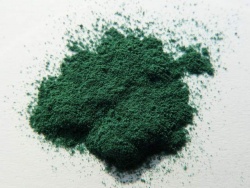
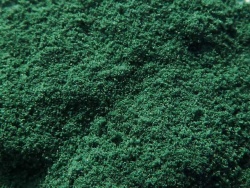
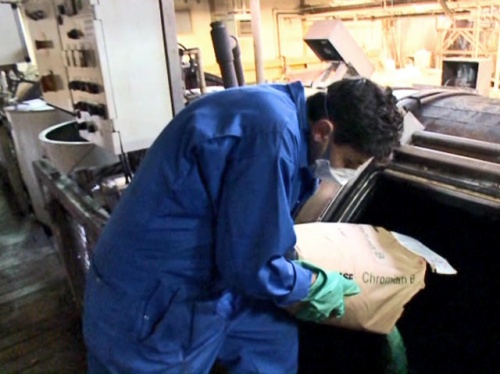
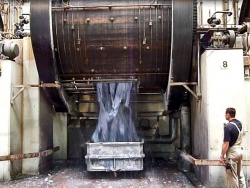

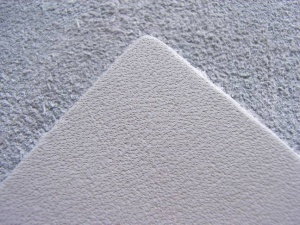


 a kotori web solution
a kotori web solution